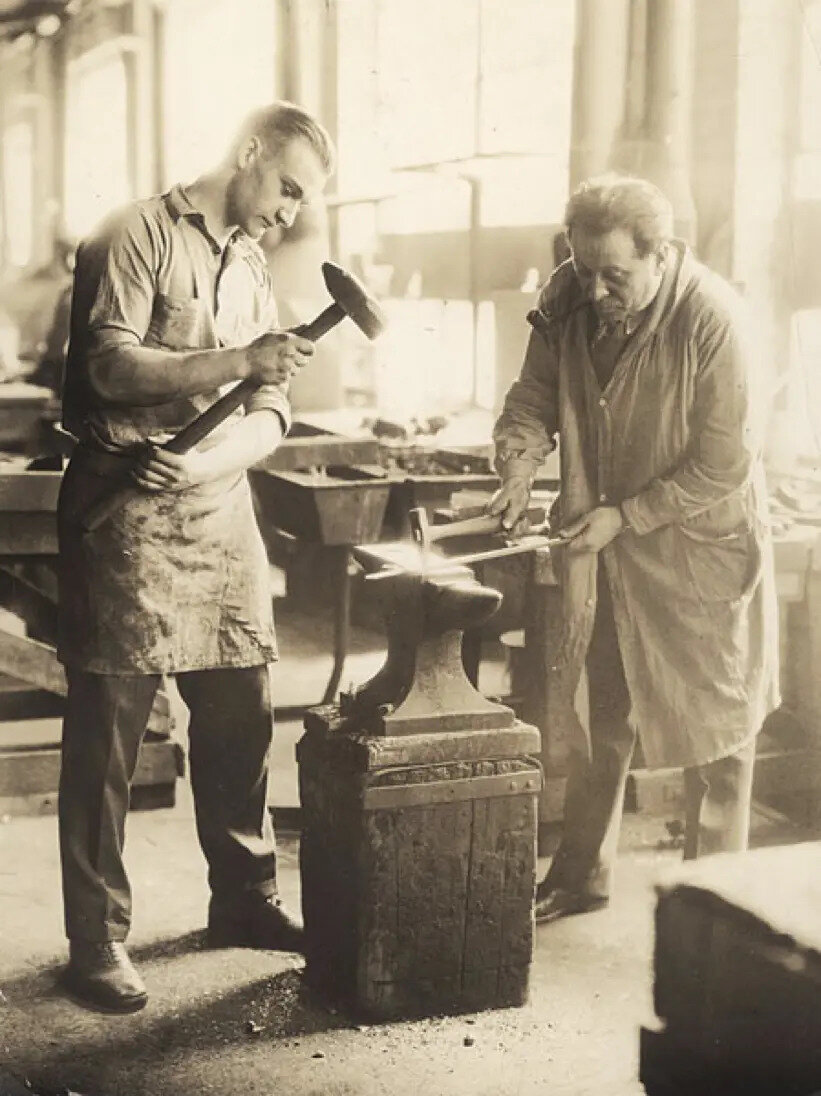
Samuel Yellin
Samuel Yellin (1885-1940) was a famous American blacksmith, metal designer, and leader of the American Arts and Crafts movement.
Yellin's ironwork for the Candoro Marble Company included the wrought iron doors and transom, internal gate (recreated), and lamp (lost.) Born in Galicia, Poland, he apprenticed with an ironmaster from the ages of 11 to 16. During that period, he gained the nickname of "Devil," for his work habits and sense of humor. Yellin left Poland and traveled through Europe before departing for America. By 1907 he was taking classes at the Philadelphia Museum School of Industrial Art in Pennsylvania. Within months he began teaching at the school and continued to work with students until 1919. Yellin founded his metal shop in 1909 and by 1915 the architectural firm Mellor, Meigs & Howe, for whom Yellin produced and created many commissions, had designed a new studio for him.
Samuel Yellin, remembered for his masterful work in iron, was adamant in his intellectual adherence to what I call the Craftsman Ideal. In lectures and writing, Yellin translated this ideal into a language consistent with his own experience. At the height of his mature career, Yellin taught at the University of Pennsylvania, lectured at the Architectural Club of Chicago and Architectural League of New York, traveled to Europe, and consulted for the Philadelphia and Metropolitan museums. Yet, he continually refined his persona as a craftsman and underscored his identity by self-reference as a "blacksmith." In his insistence on design suited to function, his use of appropriate materials, and the application of proper techniques, Yellin epitomized the search for a craftsman ideal.
— Anna Fariello, Samuel Yellin – Sketching in Iron
Photo: Samuel Yellin, on the right side, with striker, circa 1920s. Photo courtesy of Samuel Yellin Metalworkers
At the height of the business in the 1920s, Yellin employed over 200 workers and was known as an innovator in the field. His artistry can be seen in buildings such as Fidelity Bankers Trust, Knoxville, Tennessee; the Art Institute of Chicago, Chicago, Illinois; Detroit Public Library, Detroit, Michigan; the Ritz-Carlton Hotel, Atlantic City, New Jersey; the Federal Reserve Bank of New York, New York, NY; and the Seattle Art Museum, Seattle, Washington. Yellin died in 1940, but his Philadelphia business continued for decades under the directorship of his son Harvey, and today his firm endures under the administration of his grandaughter Clare Yellin.
Iron gate detail. Bruce Cole Photography
Interior Entrance. Bruce Cole Photography




